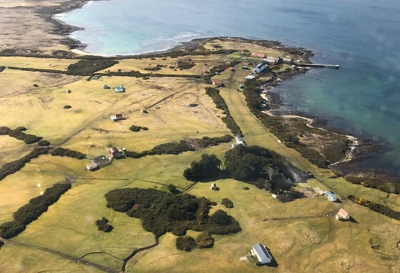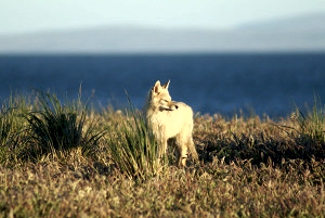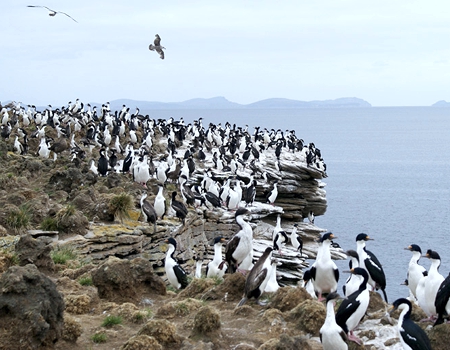
Custom Designing Pampered Adventure since 1966

Destinations
Experiences
 |
L A D A T C
O T O U R S Custom Designing Pampered Adventure since 1966 |
 |
||||||||
| HOME | South America | Falkland Islands | Antarctica | Unique Destinations |
Unique Experiences |
Newsstand | ||||
 |
FALKLAND ISLANDS
Weddell Island
Activities & Wildlife |
 |
 |
 |
 |
 |
WEDDELL ISLAND - WHAT TO DO:
explore the settlement
- Visit the penguins and sea lions
- See the wonderful birdlife of the Falkland Island
- Walk up 1,256ft / 383m Mount Weddell and enjoy 360 degree panoramic views
- See a working sheep farm
- Walk in the wilderness
- Relax just being away from the digital world – there is no mobile phone reception
Walk Weddell
There is no better way to enjoy the unspoilt landscape of paddocks, “camp” and hills than on foot with wildlife and sea views never far away. There are no designated footpaths on Weddell and only a few 4×4 tracks; the vast majority of the Island resembles a wilderness. Some sample walks include:
Explore the Settlement (5mins – 120mins).
Walking around the settlement is easy. The sheep pens, woolshed, jetty and Settlement graveyard are interesting to explore and there is bird life everywhere on land and in the creek. The large Gentoo penguin colony is within 15 minutes walk of the accommodation and Magellanic penguins have burrows all around the coast (and under much of the gorse hedging within the settlement).
Gull Harbour (30mins to 2 hours).
The Settlement is at the end of Gull Harbour and a walk around the harbour is rewarded with picturesque views back to the settlement.
Mark Point Walk (1-7 hours).
Adjacent to the settlement, a walk around Mark Point can take an hour or a full day. In addition to the Gentoo colony, there are sandy beaches, whale skeletons and a plethora of natural flora and fauna.
Loop Head Walk (1-7 hours).
A walk around Loop Head can take just an hour or a full day – when you have gone far enough, just cross over the peninsula and walk back to the settlement. At the end of Loop Head is a Sea Lion colony, en route to which you can stop at an old shanty. Loop Head is home to a wide range of birds and flora and sea lions and dolphins can often be seen from the coast. Whales are now a common visitor to this shoreline during the months of January to April. You may even see a fox. Due to its size, guided Land Rover tours are available to enable visitors to see all this area has to offer. A 3.5 kilometre long, coastal tussac restoration programme was established in September 2017.
Mount Weddell 1,256ft / 383m (2 ˝ – 3 ˝ hours).
This is a reasonably straightforward walk from the settlement but sufficiently strenuous to give a sense of achievement. A superb 360-degree vista over the island and surrounding hills, creeks and other islands is the prize at the top!
Hell’s Kitchen (6-7 hours).
Hell’s Kitchen is a bay in Chatham Harbour, where it is believed there used to be sealing. The walk can follow the ‘The Street’ sheep fencing for much of the way.
Explore (from hours to days!).
You are free to explore all 102.6 square miles, visit old deserted shepherd Shanty’s, remote coves and picturesque hillsidesWILDLIFE
The Patagonian Fox
The Patagonian Grey Fox was introduced from Patagonia into several island locations across the Falkland Islands in the late 1920s early 1930s by the then Owner – John Hamilton. Today foxes are only present on Beaver, River and Weddell islands. They are widespread on Weddell Island and may number between 3,500-5,000 animals. The Patagonian Grey Fox is found extensively throughout the South American, Southern Cone.
It is a small fox, weighing 2.5 to 5.45 kilograms (5.5 to 12.0 lb), and measuring 65 to 110 centimetres (26 to 43 in) in length. Foxes on Weddell give birth to their cubs in late October/early November and litters comprise up to 4 or 5 cubs. Whilst a wonderful site to see young cubs playing outside the den, they are an invasive species sitting on the pinnacle of the island wildlife food chain. Foxes may be seen within walking distance of the Settlement.
Research into the impact the foxes have had on Weddell Island is limited, anecdotal and perhaps, inconclusive. Foxes kill new-born lambs up to lambs as old as 3 weeks. Regarded as opportunistic feeders they are a sheep farming pest, but their presence on Weddell provides an opportunity to gain an insight into the private life of a well-integrated and highly adapted invasive species, whose foraging range extends from wild berries and insects, to shoreline marine life, juvenile penguins, other birds and eggs, and young lambs
Dolphin watching.
Peale’s and Commerson’s dolphins can frequently be seen close inshore off the beaches or in the bays, including right by the Settlement.
Whale Watching.
The Fin and Sei whales are classified as Endangered species and Queen Charlotte Bay to the East of Weddell Island is being increasingly recognised as an important area for whales both in the Falklands and globally. Other Falkland whale species are also regular visitors to the waters around Weddell Island. Depending on the time of year and weather conditions, whale spouts and what activity can be seen from the settlement and other parts of the island.
Bird watching.
For full details of the many species of birds that can be seen on Weddell, please see our separate page on “Weddell Birds”.